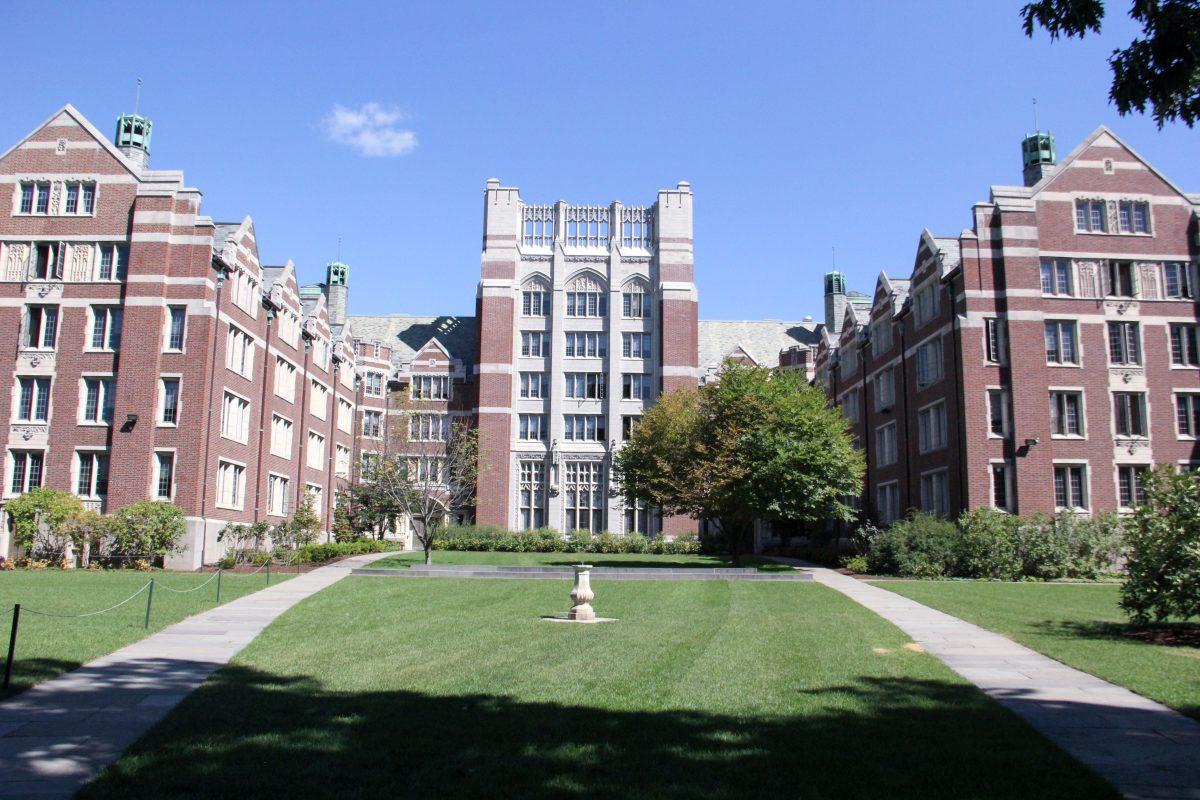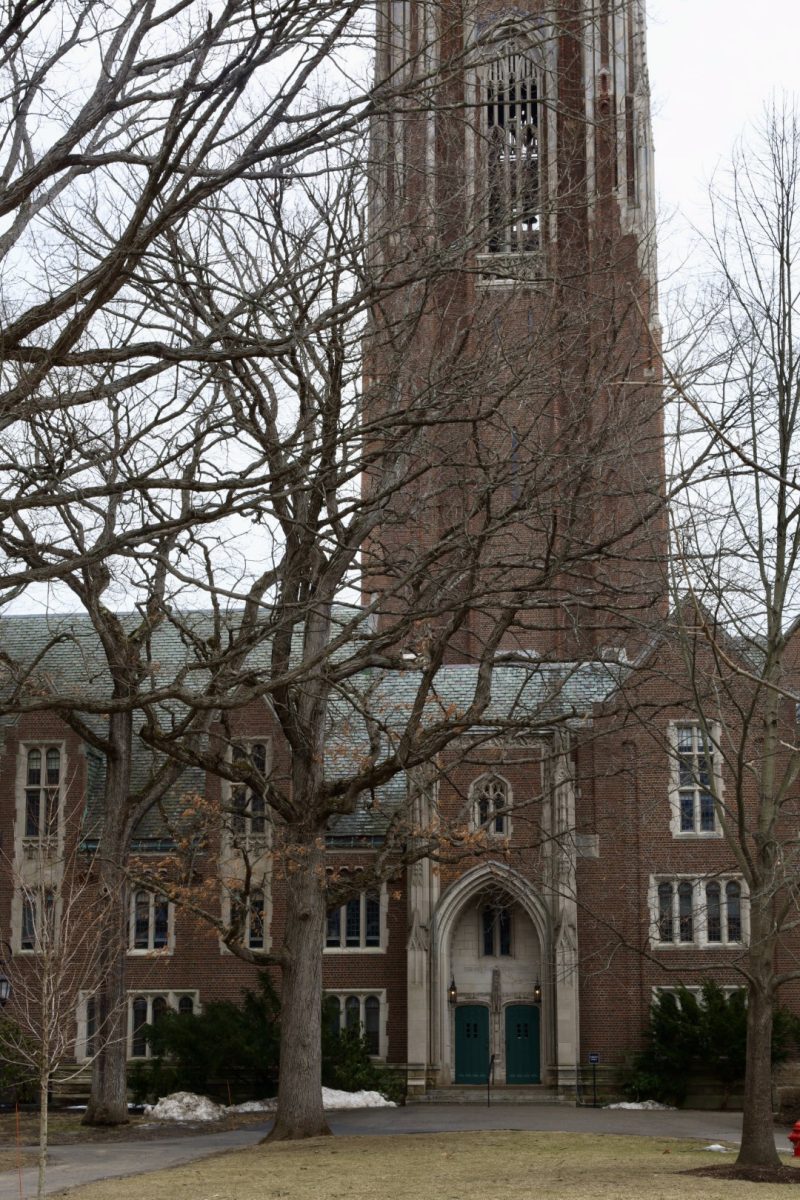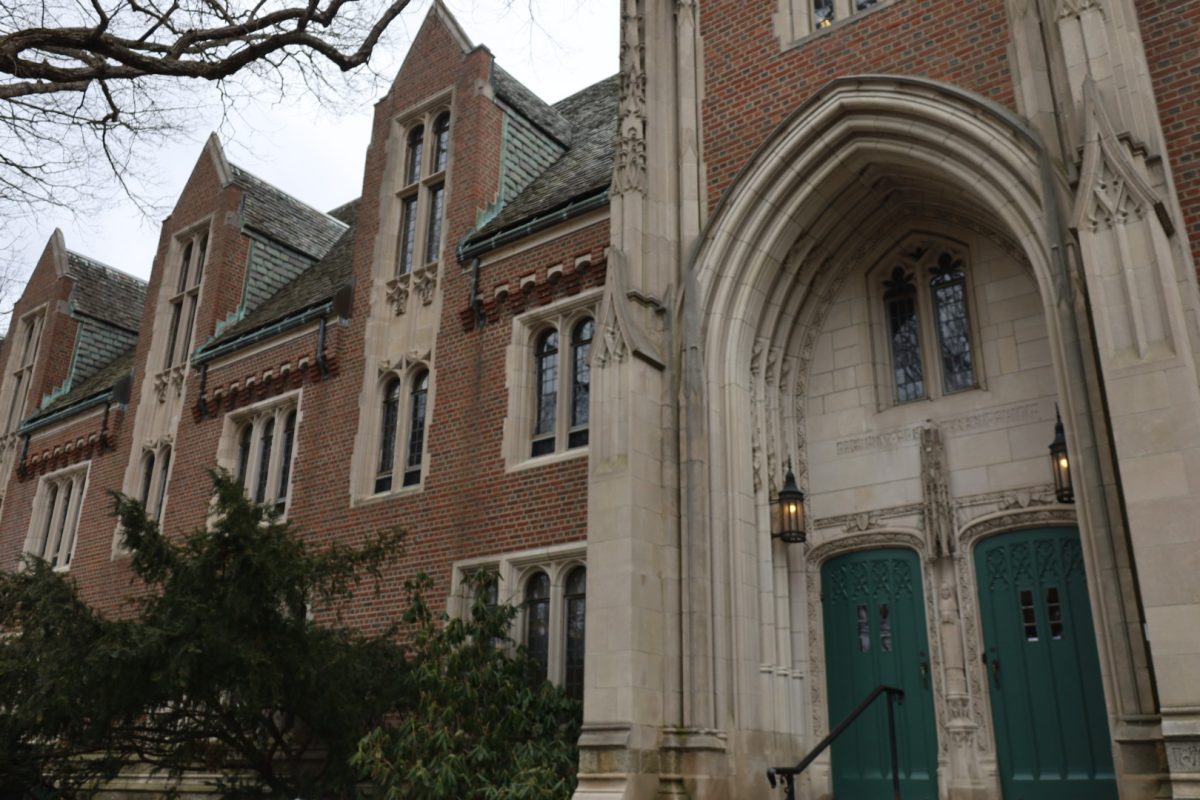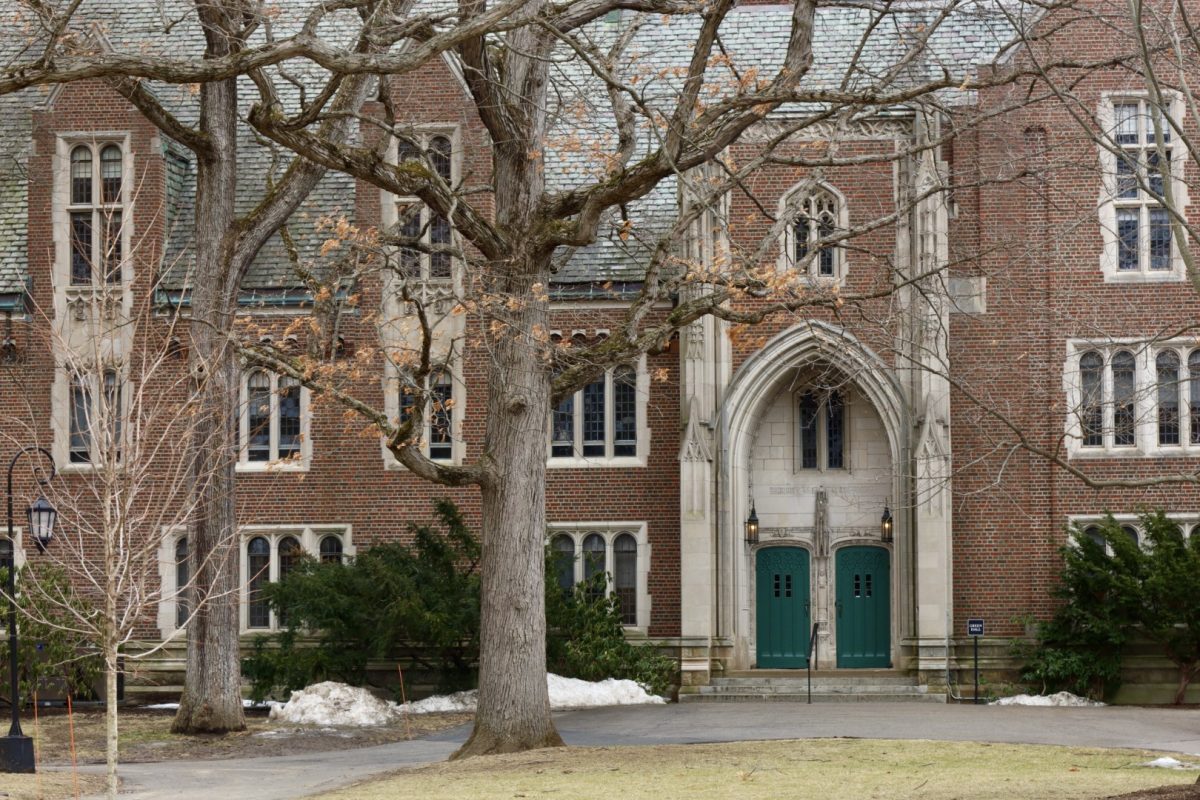In our two previous issues, The Wellesley News revealed findings from our investigation, “Corporatizing our community,” into the Voluntary Retirement Program (VRP), a retirement incentive package offered to faculty and non-union staff over the age of 60 who have been in service of the College for at least 10 years. Our first article, “Financial anxiety at Wellesley College,” illustrated the details of the package and explored the source of anxiety amongst the remaining faculty and staff: the possibility of layoffs and further cuts. The second article, “Faculty concerned about curricular effects of VRP,” focused on diminishing departments and academic shortcomings due to the loss of 34 faculty members at the end of the school year. This week, The News seeks to answer the reason for the implementation of the VRP. All directions—from students, staff, faculty and administration—point to the major underfunding of infrastructural maintenance and building renovations as the reason for faculty and staff cuts at Wellesley.
First year move-in day was well underway when an unnamed Dower resident ’20 entered room 109 last year. At the outset, she did not see anything wrong with the room. Room 109, which is located at the end of the hall on the first floor, is one of 20 dorm rooms inside the repurposed barn, originally built in 1862. It is also one of Wellesley’s many dorms that has a history of persistent and alarming living conditions.
Like many first-years, this resident was worried about living with roommates and adjusting to life without her family. So when a brown mouse darted in and out of her closet, she thought that it was simply because her eyeglasses prescription was out of date. With academics and transitioning into college, the possibility of pests in her new living space was the last thing on her mind.
As the weather got warmer towards the end of the semester, however, termites became the problem. The wooden floors of the old barn had been rotting and eaten away by countless termites, which began to come through the cracks in the floor to swarm room 109. At one point, she noticed a black shirt on the ground on the opposite side of the room. She thought that wind was blowing around the shirt, which was moving on the ground. But then, she realized that the shirt was stretching. Standing paralyzed, she watched as termites swarmed her room and started to move towards her roommate’s bed.
When she approached her resident director (RD), the director said, “It’s a New England house that is made of wood. It happens.”
The termite problem in Dower, which had been addressed multiple times by custodial staff, the resident assistant (RA), house president (HP) and RD, persisted to this year. A new Dower resident ’21, who moved into the same room, claims that multiple swarms of termites can be found in the Dower bathrooms. “It was pretty disgusting at first, but you kind of get used to using the bathrooms with termites everywhere,” she said.
In late February, she brushed one off of her face in her room. The termites had found their way back into room 109. When she dropped something behind her desk, she found more than 50 dead termites in the corner and along the wall. She found live ones as well, under the rugs and around the corners of the room.
Campus Police was called, and they put poison in the room, which resulted in this resident not being able to return to her room for a few hours.
The next week, live termites were everywhere— coming out of cracks in the wall, emerging from behind the heater. She found several on her bed.
The resident grew frustrated at Wellesley’s actions, which she saw as the bare minimum. “My room had a history of termites … Wellesley knew that there was a termite issue,” she said.
“The students are paying for [financial] mistakes the College has been making, or made in the past. It’s unfair. Whatever way that this happened, you’re part of an institution and in my case, my parents are paying a lot of money for me to go to school and to live in housing on Wellesley campus—and I’m living with termites,” she continued.
The termites have eaten through the wood of the floor, turning the floorboards soft. In one of the room’s closets, there is a hole through which one could see into the basement. She and her roommate taped over the hole in an attempt to remedy it.
She does not blame the staff who work constantly to alleviate problems around campus, however. “The maintenance staff has to go around and put bandaids on a bunch of things, and then get the brunt of ‘Why are things the way that they are?’ even though all they have is the ability to sweep up termites or set mouse traps,” she explained.
Persisting room and building issues are not uncommon throughout Wellesley’s residence halls. Daniela Kreimerman ’19 was hanging out in Munger when a student’s roof partially caved in from snow. Last week, Prapti Koirala ’19 was in Severance Hall when she tried to fill her water bottle from the drinking fountain only to find that the water was completely brown. These students are just a handful of those who have experienced problems with their living space, raising concerns about the conditions of the buildings on campus.
These issues plague academic buildings as well as residence halls. An anonymous member of Wellesley’s administrative staff brought to The News’s attention that the Jewett Arts Center, which houses the art and music departments, has no sprinklers and its air ventilation system is from the 1950s.
Hans Han ’18, an Art Library employee, also noted the issues they saw with Pendleton West, whose renovation took two years and cost approximately $45 million. “We rebuilt all of Pendleton because it was literally falling apart. It was a health hazard; it wasn’t filtering out paint fumes from the paint studios,” they said.
On Dec. 7, 2011, former College President Kim Bottomly sent an email announcement to community members updating them on the planning process Wellesley was then set to undertake, which was called Wellesley 2025: A Plan for Campus Renewal (W2025). The plan incorporated data from the past 10 years and took note of major maintenance needs. “The results were sobering, highlighting the fact that we have a significant backlog of repair and modernization needs across the campus. Despite the considerable investments in renovation and construction that we have made over the past 10 years, 82 percent of our buildings have not had a major renovation in more than 25 years; and 62 percent have not had a major renovation in more than 50 years,” the announcement stated.
More specifically, in regards to buildings such as the Jewett Arts Center and Pendleton West, the goals included “addressing some very basic safety issues” along with updating spaces to adapt to programmatic needs. According to a report by an outside company, Ellenzweig, analysis on the Science Center and its surrounding buildings “revealed significant problems with the infrastructure systems in the greenhouse structure, the L-wing and Sage Hall, including significant concerns with the exterior envelopes of all three buildings.”
For residence halls, the College hired a separate company, Newman Architects, to prepare the Student Residential Experience report. They found that the buildings “require extensive work to restore exteriors, refresh interiors, comply with contemporary life safety and accessibility codes, replace aging and outmoded systems and add new capabilities.”
W2025 references the 2007 Comprehensive Facilities Plan, a report conducted by Facilities Management in association with several outside companies, which revealed that “Some buildings with exterior envelope deterioration will be increasingly at risk of sustaining damage. Numerous major building systems now require, or soon will require, replacement. Many interior spaces are tired or functionally obsolete.”
Over the past couple of years, the College has seen parts of the W2025 plan play out across campus. These include the renovation of the Science Center, demolition of the greenhouses and the renovation of Pendleton West and the Schneider Center, among others. Beginning in June 2017, the College launched a five-year plan to renovate the residence halls across campus. Bates dining hall, which saw the introduction of a salad bar, gelato station and more at the beginning of this year, was one of the first residential areas across campus to be renovated.
But according to the W2025 document, which can be accessed on the College website, the budget for all of the renovations is much more than the College can reasonably afford, driving the College to fundraising campaigns and cost-cutting measures like the VRP. “Taken together, the project cost of the Working Group’s full program plans were estimated, in 2012 dollars, to be around $1.38 billion; even the ‘no-growth’ options, at $904.5 million, would greatly exceed the College’s targeted budget range of $325 million to $550 million,” the document said. Thus, the College has chosen to execute only a number of the report’s recommendations, such as renovations of the residence halls and the Science Center.
According to Assistant Vice President for Resources Kimberly Hokanson, the College embarked on its first fundraising campaign, “The Wellesley Effect,” in over a decade, “the goal of which is to raise $500 million for endowment, current-use funds and capital projects [such as building renovations].” In an email, Hokanson directed The News to the Campaign to Advance the Wellesley Effect website, which includes a campaign film and alumnae testimonials. According to the page A Sense of Place, “It is with great care and love that we update the convening spaces of the residence halls—the home that nurtures the friendships that last a lifetime.”
For the Dower resident ’20, this statement is far from the truth. “What really shocked me was not only the unlivable living standards but how ‘okay’ and ‘status quo’ it seemed to the administration. There is a dominant culture on campus to shush these very real problems,” she explained.
With such a large disparity between total project plan cost and the College’s targeted budget, keeping in mind that the College has chosen to adopt an abridged, cheaper plan of what the report deemed most critical, it comes as no surprise that Wellesley now faces a tenuous financial situation, which has resulted in the introduction of the VRP in order to save money by reducing staff and faculty numbers.
The longstanding need to address deferred maintenance on campus is no secret, either. In an email to all faculty and staff on May 2, 2016, Megan Núñez, professor of chemistry and then-chair of the Budget Advisory Committee (BAC), said that the College had made significant budgetary considerations to adjust for “the necessity of setting aside a sizable proportion of the operating budget annually to cover the full cost of the depreciation of our campus facilities each year and to invest these funds in campus renewal to address significant facilities needs across campus.”
The BAC cites Wellesley’s 2014 Fifth-Year Interim Report to the Commission on Institutions of Higher Education (New England Association of Schools and Colleges) for the projected sums needed for the projects. “Currently, there is a shortfall of approximately $10 million per year between depreciation and major maintenance and other capital spending funded out of the operating budget; this deficit has been constant for at least five years,” the report states.
The Board of Trustees, which approved W2025 on April 18, 2013, approved a funding plan for W2025 of $20 million per year, or 10 percent of the operating budget, to be yielded through debt, gifts and rebalancing, according to the BAC Q&A. But in a Dec. 2017 update, the BAC estimates that $10 million shortfall was an underestimate; $12 to $15 million would have been more realistic. “If, as the language suggests, all $20 million of rebalancing was actually going to be devoted to ‘filling the hole’ we’d dug for ourselves by underfunding depreciation, then we’d still be underfunding ongoing depreciation to the tune of $12-$15 million, and thus continuing to dig a deeper hole on the rest of campus,” the website explained.
Elizabeth Gildersleeve, chief communications officer and spokesperson for the College, confirmed these numbers. “We project the need to spend $10-15 million more per year in the future to address long-standing deferred maintenance,” she said.
Richard French, professor of astronomy and a member of the steering committee for W2025, explained the considerations that must be made for the operating budget. The first is deferred maintenance, or saving enough money “because you know your roof is going to leak once in a while or your pipe is going to break, so you have a budget for fixing stuff and keeping it going.” Another consideration is replacement cost, which French compares to buying a new car. “It’s not just that you have enough money to change the oil; you have to have enough money so that some day when your car isn’t able to keep running, you get a new car,” he explained.
In an interview with The News, French attributed the current financial difficulties to the need to address critical issues in buildings across campus. “That tension of being able to pay for expensive projects while supporting our core academic mission and students is continuing today. Even though I’m not in the dean’s office, we can see on a weekly and daily basis the challenges everybody has at the College,” he said.
“We live in these buildings that aren’t as fancy, so I think there’s been sort of a feeling of being accustomed or satisfied with what we have, until there’s a point that some of the buildings are really crumbling, and we really need to address them,” he continued.
In regards to the VRP, Casey Rothschild, Norma Wilentz Hess associate professor of economics and current chair of the BAC, explained to The News that the reductions in faculty and staff due to the VRP will be significant monetarily in offsetting the substantial fiscal burden that deferred maintenance will require. According to Rothschild and a table on the BAC Q&A, reductions in faculty due to the VRP are projected to be approximately $4 million—the largest sum available on the table, which also includes $3.6 million of fundraising from the capital campaign. Along with the $4 million saved from faculty reductions, staff reductions will total a projected $1.2 million. As The News reported in the first article of the series, 34 faculty members and 38 staff members elected to take the VRP option.
When asked about these numbers, however, Gildersleeve deflected, saying it is too soon to tell. “The financial impact of the VRP on the operating budget will not be fully known until after particular faculty and staff positions have been replaced. Given the long recruitment process for tenure-track faculty members, this will take at least a year,” she explained.
For Lorraine C. Wang Professor of English Margery Sabin, the tension remains between Wellesley’s perceived wealth and the financial cost-cutting measures the College has taken in recent years. “There is a feeling, I think widespread, that Wellesley is a wealthy college, and why are we faced by these huge cuts, but it’s also the case that our buildings are falling apart, so it’s complicated. I think that the president and the provost are aware of these problems. It’s a lot of people to be leaving all at once, much more than ordinarily,” Sabin explained.
Professor William Joseph, chair of the political science department, reiterated the financial burden large-scale renovations have on the budget. It was “revealed that there was a huge amount of critical deferred maintenance, things that had not been done that had reached a point that was so critical that the basic structural soundness of the buildings had to be dealt with. In order to do that, it would require a rebalancing of budgets so money could be allocated to that goal,” he said.
But the decision to procrastinate investments on the very structure of the College falls solely on those that make up Wellesley’s top administration. “There’s a reality check when you discover that in some dimensions—and I fault myself as much as anybody in my role when I was in the dean’s office—didn’t recognize how expensive it was to keep the infrastructure going and the effort that would be required to raise the funding that would make that happen,” French concluded.







susan klee | Apr 26, 2018 at 1:18 am
I would like to obtain from “Buildings and Grounds” modern equivalent information on 3 situations similar to the following:
We were told of minor softening of the wooden structure of _______Hall in 2005. It would cost $10,000.to repair.
This was deemed too expensive a project and was allocated to Deferred Maintenance. That area will now cost $150,000 to re-build.
2. __________
3. _____________